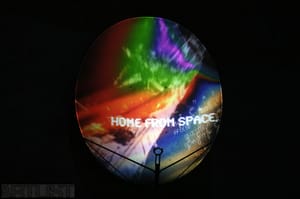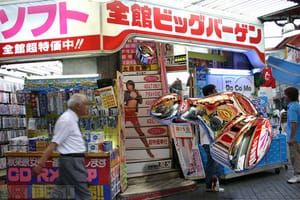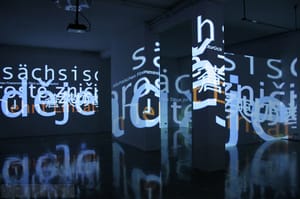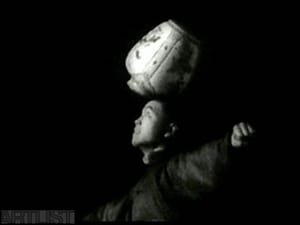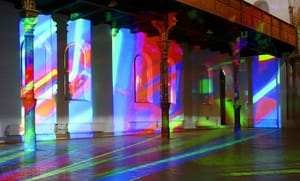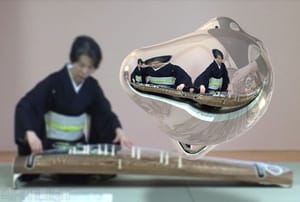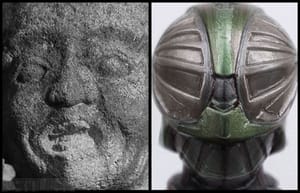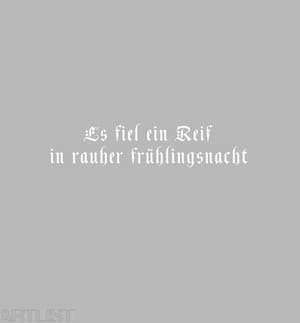- First Name
- Pavel
- Surname
- Mrkus
- Born
- 1970
- Birth place
- Mělník, Czech Republic
- Website
- http://mrkus.ixode.org
- Keywords
- CSU Library
- ↳ Find in the catalogue
About artist
Electronic reality embodies inconsistent, and for the viewer often illegible symbols and processing systems. It is through intentions based on experience and elements of real-world application that we try to research and become familiar with it. These technological allegories however serve only as moveable references and depict a given area only partially and often in a distorted manner. Similarly incomprehensible - as is the whole sphere of virtual constructs – is Mrkus‘ work. It too is desirable and attractive, at first sight rational and transparent, but in reality it is far from providing clear judgements. In his works too we come across an intersection of the micro-world with macro-wholes that are, as a result, infinitely similar and function on analogical principles. The same holds for the intergrowth of reality and fiction or rather the ambiguous relationship between manipulative methods and interaction. In his projects Pavel Mrkus also works with the aesthetic of accidents and the causality of further chain reactions, which reference research methods seldom applied in the fields of sociological research or the theory of visual communication. Beyond these often-conflicting connotations relating to societal processes in the globalised world or technological approaches in the contemporary digital culture, the leitmotif of Mrkus‘ creations consists of evoking spiritual principles. With non-conflictual stubbornness the artist seeks out and applies elements of cyberspace spirituality to artistic projects. He subconsciously compares this spirituality to principles of ”analogue“ world transcendence. Similarly to how Eastern religious systems became the philosophical point of reference for the work of early Conceptualists, they represent (in a permeation with traditional Christian spirituality) in many ways a docking point for the cosmic odyssey of this Czech artist.
Efforts to dematerialise works of art in Mrkus‘ case consist of releasing a sort of rare spiritual essence: one that is so fragile that is can only with great difficulty become part of a permanent foundation. The artist has systematically, if not obsessively, devoted himself to this process for a number of years now. Whether this involves his cultivated, monochromatic paintings, installations, digital prints or sophisticated video-projections, their means of transmission always represents a medium without which the fundamental immanent concept (in the form of thought or actual software) could not be started.
In the case of the central interactive video-installation at the exhibit in the Galleria Contemporaneo Mestre – Venice called Space Walk (2006) photos played the role of certain unique communication mediators enabled by frames, which – a little bit furtively and certainly conspiratively – connected images of space officially distributed by NASA with an elegiacally serene micro-story about a specific resident of an individual universe. In the video-installation Iris (2008), they then fall on satellite dishes, which shaped like convex, bent projection screens carry out the function of electromagnetic ray collectors: fully-diluted information from the jungle of the media world. Similar to his previous projects, both the texts of scholastics or Buddhist sutras as well as the agency summaries from internet news servers flying around in the form of transcendental and numerical data through the virtual and concrete space of our everyday lives became the inspiration for the creation of both works.
The Czech art scene functions to a large degree as a special Central European loner with its own special references and specificities. On the whole though Pavel Mrkus gives the impression of being an exception. He naturally joins Czech cultural tradition with Eastern spiritual influences, the inconsistent essence of post-democratic globalisation and the similarly dynamic chaos of the electronic virtual dimension. Better known abroad than on the domestic scene, this artist creates an important connecting link between two still insufficiently compatible worlds.
- Author of the annotation
- Michal Koleček
CV
Studies:
1989-1995 Academy of Arts, Architecture and Design, Prague, Glass, prof. V. Kopecky
1991 Polytechnic University, Stoke on Trent, England
1998-1999 Faculty of Theology, Charles University, Prague
Teaching positions
1995-2000 assistant in glass studio at Academy of Arts, Architecture and Design in Prague
2000-2004 visiting associate professor at Toyama City Institute of Glass Art, Toyama, Japan
since 2005 assistant in Studio of Digital Media at Technical University Liberec, Czech Rep.
spring 2006 faculty in Glass and Digital Media depts. at Rhode Island School of Design, Providence, US
Scholarships:
2004 Künstlerhaus Schloss Wiepersdorf, Germany
Awards:
2003 Honorable Mention, Vessels, Koganezaki, Japan
2002 Silver prize, Japan Contemporary Glass Art, Glass Museum, Notojima, Japan
Honorable Mention, Contemporary Glass Triennial, Toyama, Japan
Exhibitions
- Solo exhibitions
-
(selection:)
2008
Space Walk, Galleria Contemporaneo, Mestre/Venice
Water Tales, Gallery Jeleni, Prague
Iris, Büro für Kunst, Dresden, Germany
2007
F.A.Q., Dresdner Kunstverein, Dresden, Germany (+D. Hanzlik)
2006
Space Walk, House of Art, Ceske Budejovice, Czech Rep.
2005
Seagull, Büro für Kunst, Dresden, Germany
Scanner, Kunstverein Viernheim, Germany
Shift, Gallery Jan Koniarek, Synagoga Trnava, Slovakia (+D. Hanzlik)
2004
A Prayer of PW20/LW, Kunstlerhaus Schloss Wiepersdorf, Germany
KotoPlay, Chromosome, Gallery for International Media Art, Berlin
Patterns, Daimaru Dept. Store,Osaka
Stray Currents, Mau Fine Art Gallery, Toyama (+J.Hongo)
2003
Fragmented, Gallery BAU, Toyama
A Prayer off, Büro für Kunst, Dresden,Germany
In Between, Gallery Enomoto, Osaka
2000
Es fiel ein Reif, Atrium, Moravian Gallery, Brno
1999
Unreacheable, Gallery by the White Unicorn, Klatovy
- Group exhibitions not included in ARTLIST.
-
(Selection:)
2011
Edge Park, Forte Marghera, Venice
Parallel History, Severočeská galerie výtvarného umění, Litoměřice
Rhytmic Exercises, BWA Sokol, Nowy Sacz, Poland
Scheinbar Sein. Faktisches und Virtuelles, Altana Gallery, Dresden
2010
Play, Mánes, Prague
One Day You Will Lose It All, 4+4 dny v pohybu, Uluv, Prague
Fertile Ground, Museum of Glass, Tacoma
A Part of No-Part, Chelsea Art Museum, New York
2009
Moving Artist, Motorenhalle, Dresden
Labyrint světla, Ekotechnické muzeum, Prague
Place in Heart, Galerie E.Filly, Ústí nad Labem
Hell of Things, Galerie Kronika, Bytom, Poland
2008
Be A Happy Worker: Work-To-Rule!, Galerija Miroslav Kraljevic, Zagreb
Close Encounters, Fine Arts Center Galleries, University of Rhode Island, Kingston
2007
New Video Art from Central Europe, RISD Museum, Providence, US
2006
New Mystics, Sala de Arte Contemporaneo, Tenerife, Canarias
Echigo-Tsumari Art Triennale, Niigata, Art Front Gallery, Japan
Modern Time Work, Machineries and Automation in the Arts of 1900, Palazzo Ducale, Genova
Frisbee, Contemporary Czech Video and Media Art, House of Art, Brno, Czech Rep.
The Destiny of Paradise is in its Geometry, KISS., Untergroningen, Germany
ArteFiera Bologna
Arco, Madrid, Spain
2005
Helden Heute, Centre PasquArt, Biel Bienne, Switzerland
Roboter, Opelvillen Rüsselsheim, Germany
Der Rote Teppich, Kunstverein KISS e.V., Untergroningen, Germany
Captured in Light and Space, EXPO 2005, Shimin Plaza Gallery, Toyama, Japan
Vladimir Kopecky and his Sphere, Chappell Gallery, New York
2004
Sputniza, Kunsthaus Dresden
Loop 04, videoart festival, Barcelona
Frisbee, (Contemporary Czech Video Art), MNAC, Bucurest, Romania
Paralel Projections, House of Art, Opava, Czech Rep.
Individual Systems, Museo Archeologico, Potenza, Italy
Art Brussel, Belgium
Hot Destination/Marginal Destiny, House of Art, Brno, Czech Rep.
Video Programm of BDV Paris, Georges, Centre Pompidou, Paris
2003
La Biennale di Venezia, Individual Systems, Arsenale, Venice
Mission Possible, 1st Prague Biennale, National Gallery, Prague
Another Movement, Kanazawa, Japan
2002
IV. Biennial of Young Artists, Gallery of Prague City
Monochromy in Czech Art of the 90ties, Czech Museum of Fine Art, Prague
Walking, Gallery Skuc, Ljubljana, Slovenia
2001
KK, House of Art, Opava
2000
Melancholy, Moravian Gallery, Brno
Unclear Evidence, House of Art, Ceske Budejovice
2nd Zlin Show of Young Artists,State Gallery, Zlin
Via 2000, Gallery Via Art, Prague
1999
Art for Hospital, Gallery V. Spala, Prague
K nebi,Gallery Sternberk
KK, Slovak National Gallery, Bratislava
L`arte contemporana Ceca, Palazzo Coen, Salo, Italy
Laboratory,Gallery Sypka, Vlkov u Brna
Public video performances:
2007
Bulva Fabula, Roxy, Prague
LPM, Linux Roma
2006
Bulva Fabula, Roxy, Prague
AVIT, Berlin
Gallery Jiri Svestka, Prague
Nirvana Revival, Club Vagon, Prague
Digital Penetration, Veletrzni Palace, Prague
Roxy, Prague
Svihov, AV multiculcural festival
Tazza, Providence, US
2005
Circus, Usti nad Labem
Tocnik, AV multicultural festival
NOD, Roxy, Prague
Multiplace, New Media Culture Festival, Slovakia
Who's next. Smiley World Association, Expo halls, Paris
2004
Video program of BDV, Georges, Centre Pompidou, Paris
Loop 04, Video art festival, Barcelona
Fu-Sui-Jin festival, Toyama
BBQ, Biwako Lake, Kyoto
Symposiums
2000
International Glass Symposium, Crystalex Novy Bor, Czech Rep.
1997
Near The Beginning, Center For Metamedia, Plasy, Czech Rep.
- Collections
-
Foundation for Contemporary Arts Prague
Anita Beckers Gallery, Frankfurt
Toyama City Collection
Glass Museum Notojima
Crystal Park Koganezaki
other private collections
- Other realisations
Commission in architecture
1998 Czech Center, Brussels, Belgium
Monography
- Articles
Günter Bartoš: SANQUIS č.183/2010, str. 16, www.sanquis.cz/index1.php




